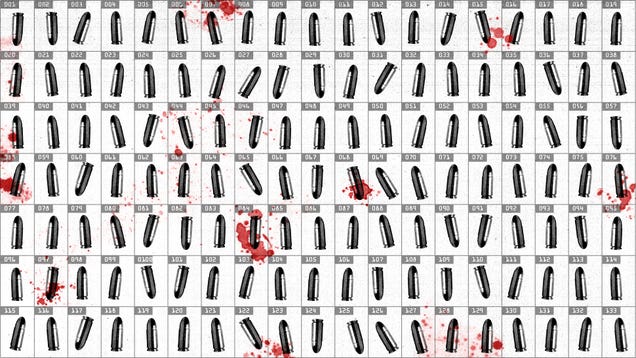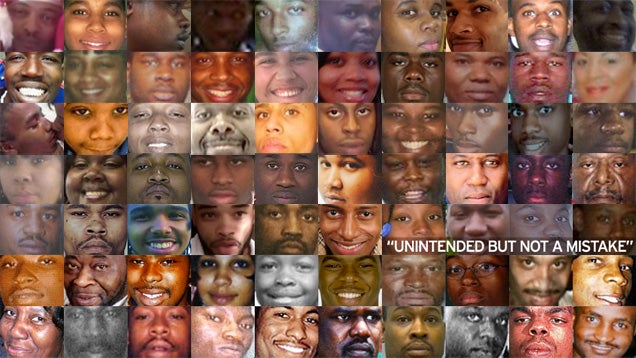Indicting a police officer is uncommon occurrence
Dec 6, 4:03 PM (ET)
By DAVID B. CARUSO
(AP) In this Feb. 18, 2012, file photo, Franclot Graham speaks to his son,...
Full Image
NEW YORK (AP) — At least 400 people are killed by police officers in the United States every year, and while the circumstances of each case are different, one thing remains constant: In only a handful of instances do grand juries issue an indictment, concluding that the officer should face criminal charges.
Successful prosecutions generally involve officers who have lied about what they've done, tried to cover up their actions, or used excessive force to inflict punishment.
Even as protesters took to the streets Wednesday to decry the failure of a grand jury to indict an officer who used a fatal chokehold on an unarmed man in New York City, a grand jury in South Carolina voted to bring murder charges against Richard Combs, a small town police chief who fatally shot an unarmed man who had come to Town Hall to contest a traffic ticket.
Earlier this year, a grand jury in North Carolina indicted a Charlotte-Mecklenburg officer for fatally shooting a former college football player who was knocking on doors looking for help after he drove his car off the road.
And a police officer in North Augusta, South Carolina, was indicted in August on a charge of misconduct in office after he shot a 68-year-old man who had failed to pull over for a traffic stop, and instead drove home.
It is difficult to generalize about why some cases lead to criminal charges, while others do not, but history shows that jurors may have less sympathy for officers who are guilty of more than just poor judgment during a crisis.
Police who get caught lying tend to get charged. So do those who use force to inflict punishment rather than to protect themselves, or who instigate physical confrontations for reasons that seem personal, rather than professional.
"If an officer goes rogue, really, and is acting personally, and not as an officer of the law, that's when you'll see a criminal charge," said Candace McCoy, a professor at the John Jay College of Criminal Justice in New York.
Philip Matthew Stinson, a professor at Bowling Green State University in Ohio, who has been studying a database of 10,000 police arrests for various types of misconduct, said judges and juries are perfectly willing to throw the book at an officer — if they did something that went beyond their official duties, like robbing a drug dealer or using the authority of their badge to settle a personal score.
(AP) This file image provided by the Los Angeles County Superior Court shows police...
Full Image
"If the jury is sitting there thinking, 'Oh my God. A split-second decision like that? What would I have done? Would I have shot the guy?' you're not going to get an indictment," he said.
Second-guessing an officer's judgment can get even harder if there are conflicting accounts about what happened. That was the case in the death of Michael Brown, the unarmed 18-year-old shot to death in Ferguson, Missouri. Witnesses disagreed about whether he was charging the officer when he was killed or was trying to surrender.
When prosecutors do bring charges, they have often been linked to an attempt at a cover-up.
That was the case with the death of Raymond Robair, a 48-year-old handyman who was fatally beaten on a New Orleans street in 2005.
The police officers who initially brought Robair to the hospital claimed that they had found him beneath a bridge. In written reports, they described their encounter with Robair as a medical call.
(AP) In this July 8, 2010 file photo, Wanda Johnson, center, mother of Oscar Grant,...
Full Image
Witnesses told a different story. They said one of the officers, Melvin Williams, had beaten the man with his baton. An autopsy concluded he died from a ruptured spleen. When interviewed by the FBI, Williams' rookie partner, Matthew Moore, claimed that Robair had hurt himself when he fell down while trying to run away.
An initial police investigation didn't result in any charges, but the case got a second look in 2008 when the FBI began probing killings by New Orleans police officers in the days after Hurricane Katrina.
Federal prosecutors ultimately brought civil rights charges. Williams was convicted and sentenced to more than 21 years in prison. Moore was sentenced to five years for conspiracy and lying to federal agents.
"It's really, really difficult to get a successful state court prosecution," said Mary Howell, a New Orleans civil rights attorney who has represented victims of police misconduct. One reason, she said, is that prosecutors are reluctant to put the police on trial. Another is that grand juries look for a high level of proof that an officer has done wrong.
"It really is one of those rare instances where there is a presumption of innocence," she said.
(AP) This undated family file photo provided by the National Action Network shows...
Full Image
If getting an indictment is tough, getting a conviction is even harder, especially in deaths involving a shooting.
Over the past 15 years in New York City, nine police officers have been indicted in four shooting deaths.
Only one officer was convicted, and his punishment was light. Officer Bryan Conroy was sentenced to probation and 500 hours of community service in 2005 for the fatal shooting of an unarmed, innocent West African immigrant, Ousmane Zongo, during a warehouse raid in Manhattan.
Two infamous cases ended with acquittals. Jurors exonerated four officers of second-degree murder in the 1999 shooting of Amadou Diallo, another unarmed West African immigrant. A judge in Queens acquitted three detectives in the 2006 shooting of Sean Bell, a groom-to-be who was shot leaving a nightclub the morning of his planned wedding.
One of the nine officers was indicted by a Bronx grand jury for shooting an unarmed, 18-year-old marijuana suspect, Ramarley Graham, following a foot chase in 2012, but the indictment was tossed out by a judge for technical reasons and a new grand jury cleared the officer.
(AP) This undated file photo provided by the Brown family shows Michael Brown....
Full Image
Those acquittals all involved officers who made a snap judgment to fire their weapons after they thought they saw a weapon.
Officers are often seen as being more likely to face charges in fatal beating cases, which often involve more sustained violence during which police might have more time to think about what they are doing. Indictments in shootings are especially rare.
But there are exceptions.
In Oakland, California, an officer was convicted of involuntary manslaughter in 2010 for shooting an unarmed man in police custody on a train station platform. The officer said he meant to use a stun gun on the victim, Oscar Grant, and pulled his firearm by accident.
A similar scenario led to assault charges being filed against an officer in Springfield, Missouri, in July. The officer, Jason Shuck, told an investigator he meant to fire his stun gun at a fleeing panhandler, but shot him with his firearm instead.
McCoy said if policymakers really want to do something about fatal encounters between police and the public, charging more officers with crimes isn't the answer.
"Within police departments, they are doing what we, as a citizenry, have told them to do, which is over-incarcerate, arrest people for minor crimes, and use force — justifiable force — to subdue people.
"And then we wonder why the police have bad outcomes," she said. "This is what the citizenry has told them to do."
---
The AP National Investigative Team can be reached at
[email protected]


